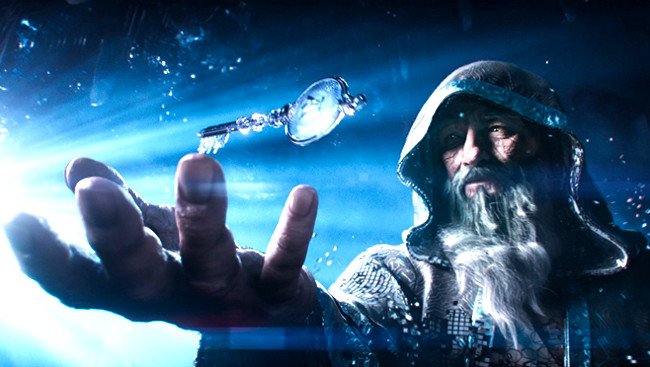
Ready Player One is a movie all about Easter eggs hidden in video games and pop culture in general. James Halliday (Mark Rylance), the creator of the movie’s virtual reality world, the OASIS, hid an Easter egg deep within it before he died. If the players finish a series of quests, all of them tied to both the pop culture Halliday loved as a kid and his regret over how he mistreated his best friend Ogden Morrow (Simon Pegg), they get the egg and gain control of the OASIS.
In the end it comes down to (of course) a pop culture reference to director Steven Spielberg’s own movie, specifically Indiana Jones and the Last Crusade. Players in the “Atari Room” have to pick out Halliday’s favorite Atari game, and once they do, they have to find a secret hidden deep in the game. And believe it or not, both the game, and the Easter egg our hero Wade (Ty Sheridan) finds, is completely real.
Adventure was released in 1980 for the Atari 2600, and it was a huge step forward for video games. Created by Warren Robinett, and inspired by the text adventure game Colossal Cave Adventure, Adventure was among the first video games to have “persistent” enemies (that is, enemies that moved even when they were off-screen) and one of the first open-world games, where players were free to explore instead of stuck going in one direction. It was also the first action-adventure and fantasy console game, the granddad of The Legend of Zelda, Final Fantasy, and so many others.
It was so complex for its time, it took Robinett an entire year, which brought him up against one of Atari’s most notorious policies. Robinett wanted credit for the work he did, since he’d designed the entire game by hand and had to come up with some creative workarounds for the limits of Atari’s hardware. But Atari had a strict policy of never crediting creators, which it argued was to stop competitors from poaching its employees. The irony was these circumstances had led a group of Atari’s programmers to jump ship and found Activision, so we owe the Call of Duty franchise to Atari’s cheapness. Thanks, Atari!
So Robinett came up with a workaround. If you found a “gray dot,” which you could only get by “bouncing” against the wall of a certain room, and took it to an entirely different location, it’d unlock a room that had Robinett’s credit inside it. Only Robinett knew about it, and he wasn’t sure that anybody would even find it, proving game programmers have underestimated the obsessiveness of nerds right from the start.
Of course somebody did find it, almost immediately after the game hit stores, and Atari was furious. But not only did their employees refuse to fix the bug, it would have cost thousands to reissue the game and Robinett had already left. In the end, Atari decided to put Easter eggs, as they had started called Robinett’s little act of rebellion behind the scenes, in every game they put out, since hey, players obsessively exploring every nook and cranny of their games meant they weren’t playing the games of their competitors. The Easter Egg was usually the programmer’s initials, so in a way, Robinett helped his fellow employees get the credit they deserved.
Robinett’s act of rebellion set off something in the video game world, in particular. He proved it was possible to get credit, or get even, when the boss wasn’t looking, something video game companies have taken full advantage of. Robinett set off a flood of in-jokes and nods to fans and now, an entire movie that’s essentially one huge Easter egg, starting with the director and working its way down, all because one company didn’t give one employee a fair shake. There is, perhaps, a larger lesson there about small actions and big effects. Or, at least, giving your employees royalties, but that probably wouldn’t make for nearly as dramatic an ending.
